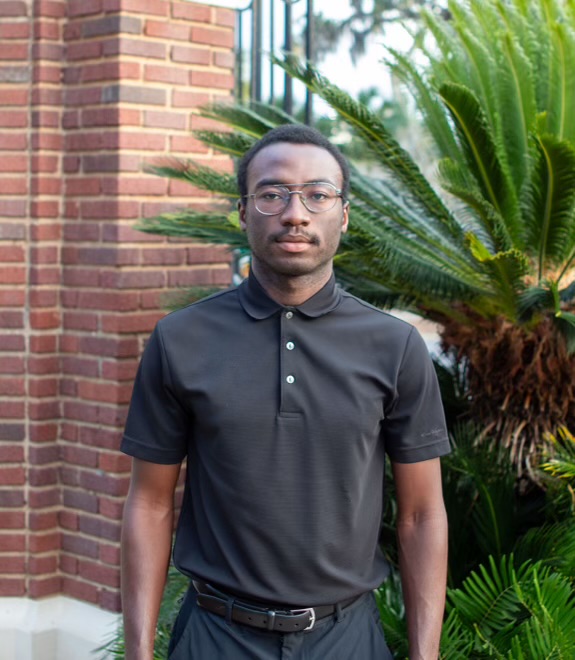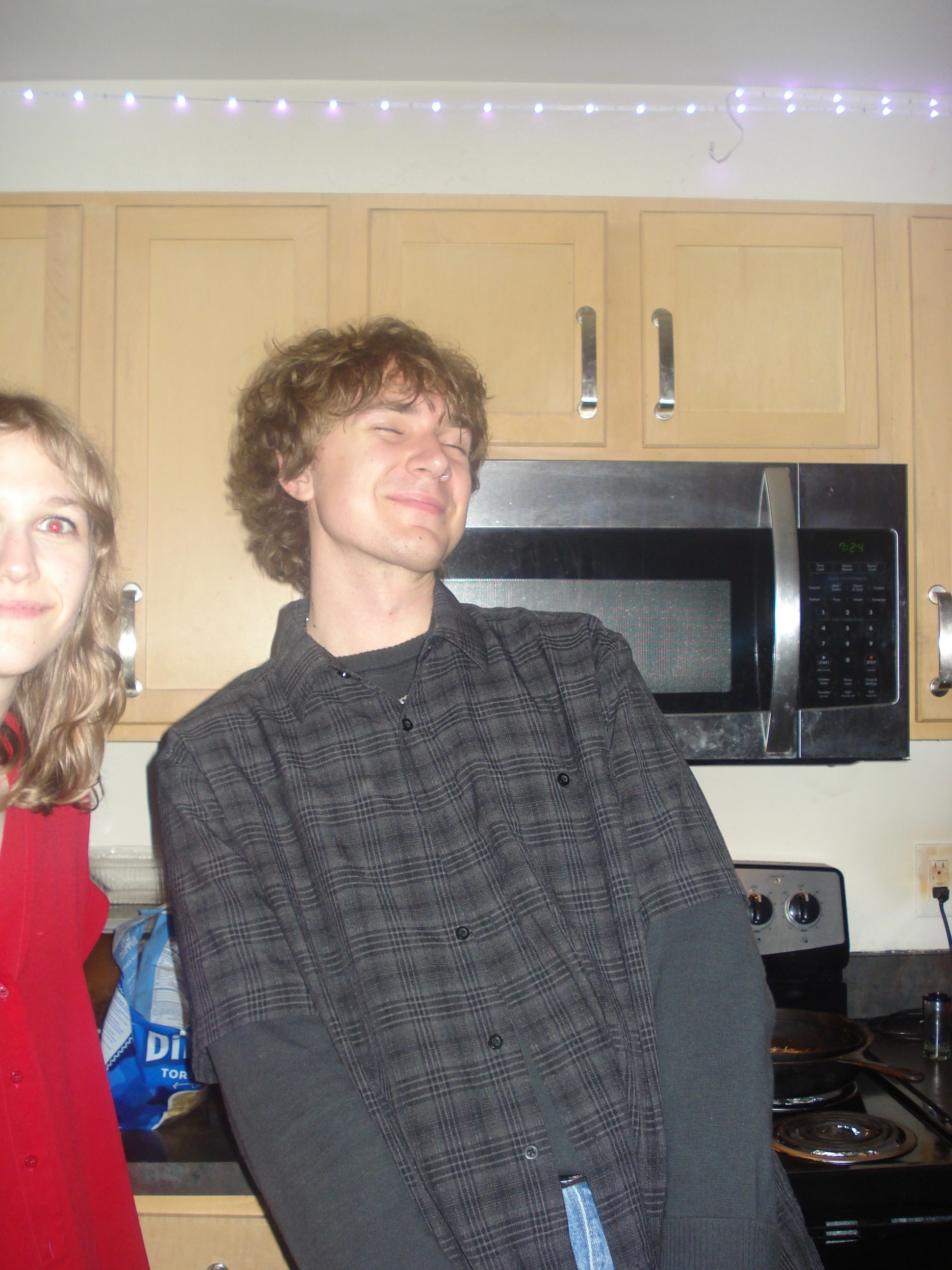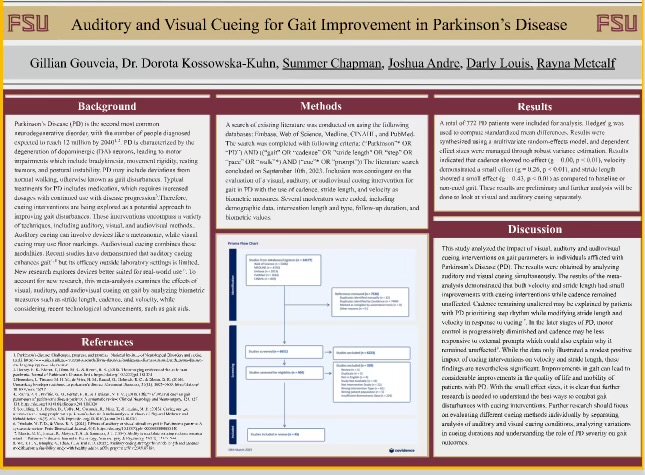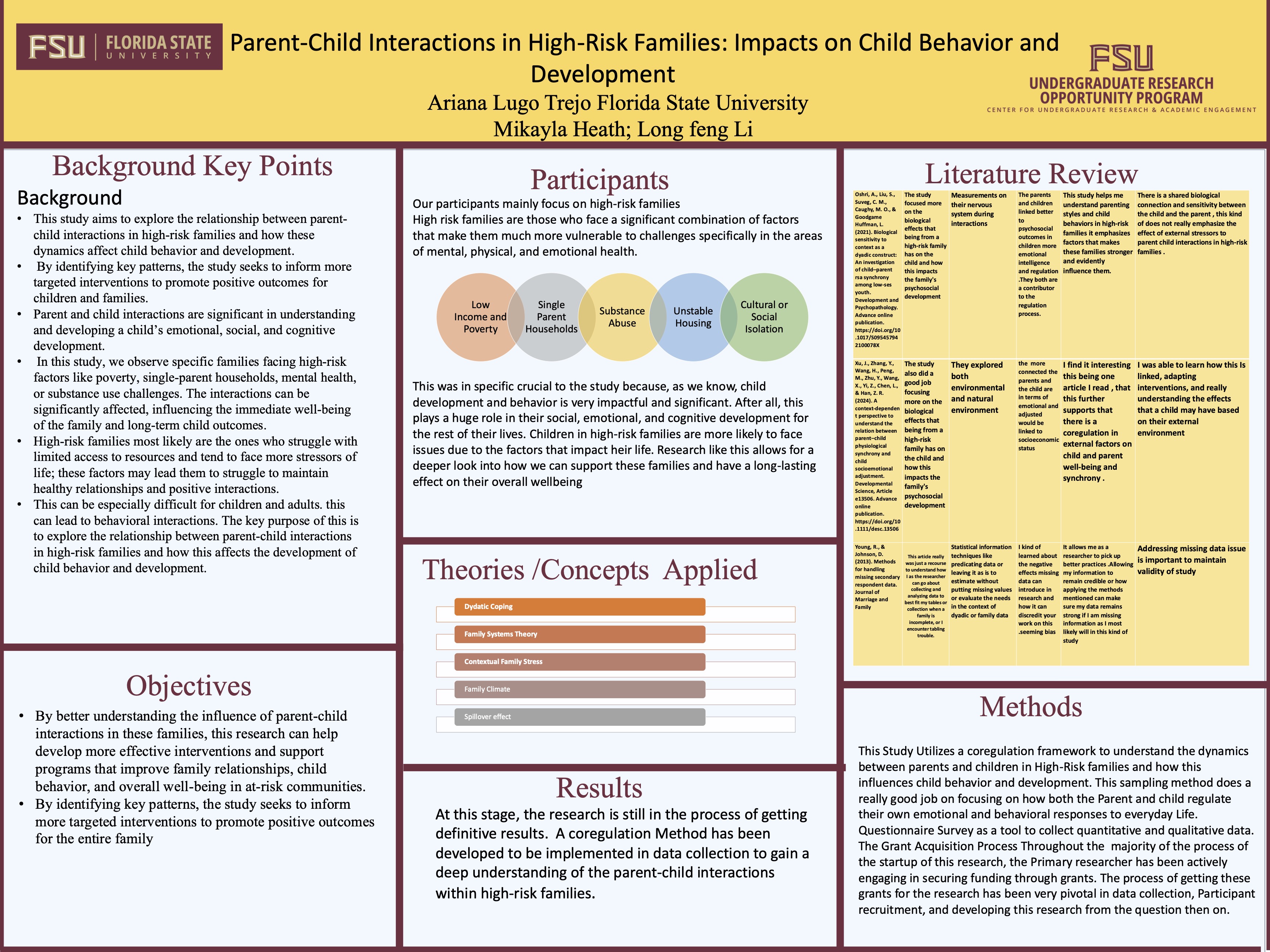Research Symposium
25th annual Undergraduate Research Symposium, April 1, 2025
Darly Louis Poster Session 3: 1:45 pm - 2:45 pm/ Poster #267

BIO
I am a behavioral neuroscience major who loves the brain and all things medicine. I plan on pursuing a masters in anesthesia program for the Fall 2026 cycle.
Auditory and Visual Cueing for Gait Improvement in Parkinson’s Disease
Authors: Darly Louis, Gillian GouveiaStudent Major: Behavioral Neuroscience
Mentor: Gillian Gouveia
Mentor's Department: Psychology Mentor's College: College of Arts and Sciences Co-Presenters: Rayna Metcalf, Summer Chapman, Joshua Andre
Abstract
Parkinson’s Disease (PD) is a neurodegenerative disorder associated with gait disturbances. Providing medications is common for treating symptoms such as gait disturbances in PD but increasing dosages are required over time. Cueing interventions such as visual, auditory and audiovisual suggests a non-pharmacological treatment for gait disturbances. This meta-analysis the effect of cueing mechanisms on three gait parameters: Cadence, stride length and velocity. A systematic literature was conducted throughout five databases that identified studies examining curing interventions for gait disturbances in Parkinson’s. Studies included measured the three gait parameters. A random-effects model was used with Hedges computing to standardized mean differences and also apply variance estimation. A total of 772 PD patients were analyzed. The results demonstrated curing had no effect on cadence but small positive effect sizes on velocity and stride length. This suggests cueing mechanism do provide a small but nevertheless significant improvement on gait. Cadence remaining unaffected may be due to patient prioritization of step rhythm adjusting in response to external cues These findings though limited demonstrate the potential cueing gait has on improving mobility in patients with PD. Future studies should distinguish auditory and visual cueing, examine curing durations and asses PD severity’s role on gait outcomes.
Keywords: Cueing, Parkinson’s, Visual, Auditory
25th annual Undergraduate Research Symposium, April 1, 2025
Braedon Farkas Poster Session 1: 9:30 am - 10:30 am/ Poster #270

BIO
My name is Braedon and I am an anthropology and history double major. I am passionate about our evolutionary history! I will be starting my MS in Human Paleobiology at George Washington in the fall. For fun, I enjoy hanging out with my friends, the outdoors, reading, and cooking.
Morphometric Analysis of Hominin Maxillary Molars: Evaluating Evidence for a Monophyletic Paranthropus Clade
Authors: Braedon Farkas, Dr. Geoffrey ThomasStudent Major: Anthropology and History
Mentor: Dr. Geoffrey Thomas
Mentor's Department: Anthropology Mentor's College: College of Arts & Sciences Co-Presenters:
Abstract
Evaluating the Evolutionary Development of Paranthropus: A Dental Ontogeny and Allometric Scaling Approach
The evolutionary origins of the genus Paranthropus remain debated, particularly whether it evolved monophyletically from a common ancestor or arose through convergent evolution. This study examines the role of post-canine dentition in Paranthropus evolution by evaluating the third maxillary molar of Australopithecus africanus and Paranthropus robustus. Using dental ontogeny and allometric scaling, I analyzed molar size and development to assess evolutionary relationships. My findings indicate significant morphological overlap between the two species, suggesting a possible evolutionary continuum rather than distinct, independently derived lineages. Additionally, environmental factors influencing dental morphology were considered, particularly in relation to dietary adaptations in Pleistocene ecosystems. Given Paranthropus’s reliance on heavy mastication, understanding third molar growth patterns provides insight into adaptive responses to ecological pressures. These results contribute to the broader discussion of Paranthropus evolution, challenging strict dichotomies between monophyly and polyphyly and refining our understanding of hominin diversity. By integrating paleoecological and morphological data, this research offers new perspectives on the adaptive and evolutionary forces shaping early hominins.
Keywords: Anthropology, Evolutionary History, Paleoanthropology, Dentition
25th annual Undergraduate Research Symposium, April 1, 2025
Ariana Lugo-Trejo Poster Session 2: 10:45 am - 11:45 am/ Poster #16

BIO
My name is Ariana Lugo-Trejo, and I am currently majoring in Exercise Physiology with aspirations to become a Physician Assistant in Emergency Medicine. As a first-generation college student from Immokalee, Florida, and of Mexican descent, my passion for medicine and health stems from my experiences growing up in a rural community where healthcare disparities were prevalent. These experiences have motivated me to pursue a career focused on bridging healthcare gaps, particularly for underserved and high-risk populations.
Parent-Child Interactions in High-Risk Families: Impacts on Child Behavior and Development
Authors: Ariana Lugo-Trejo, Longfeng LiStudent Major: Exercise Physiology
Mentor: Longfeng Li
Mentor's Department: FSU College of Education, Health, and Human Sciences (CEHHS) Mentor's College: FSU College of Education, Health, and Human Sciences Co-Presenters:
Abstract
Currently, I am conducting research that explores the relationship between parent-child interactions in high-risk families and how these dynamics affect child behavior and development. This study aims to identify key patterns in these interactions, particularly in families facing challenges like poverty, single-parent households, mental health issues, and substance use. By observing these families, my research seeks to inform more targeted interventions that can promote positive outcomes for both children and their families. I am particularly interested in understanding how the stressors that high-risk families face—such as limited access to resources and increased life challenges—affect their ability to maintain healthy, positive interactions. These interactions play a significant role in the emotional, social, and cognitive development of children, and my research aims to shed light on how these factors influence long-term child outcomes.
I am eager to continue my academic and research pursuits, with the goal of becoming a Physician Assistant and contributing to meaningful change in healthcare, especially for those in vulnerable and underserved communities.
Keywords: Parent-Child Interactions , Health Disparities, Family Dynamics and Child Outcomes
25th annual Undergraduate Research Symposium, April 1, 2025
Joseph Duran Poster Session 2: 1:45 pm - 2:45 pm/ Poster #23

BIO
I'm an Economics and Political Science double major at FSU. I've used my education and data-driven background to research investors in the Florida housing market, a current controversial issue that researchers have taken much attention to. I use my resources at the DeVoe L. Moore Center to execute public policy research to explore market-based solutions to modern economic problems. I'm driven to use the resources and knowledge available to me, alongside my peers, to help shape a stronger economy that works for everyone.
An Analsyis of Florida's Investor-Owned Single-Family Homes
Authors: Joseph Duran, Dr Crystal TaylorStudent Major: Economics, Political Science
Mentor: Dr Crystal Taylor
Mentor's Department: Economics Mentor's College: College of Social Sciences and Publi Policy Co-Presenters:
Abstract
More than ten percent of Florida’s single-family rentals are investor-owned properties (Simonton, 2024). We examine how investor-owned properties could potentially contribute to the rising costs associated with homeownership. We ask two questions, “Is the rate of investor home ownership increasing or not in Florida, and what are the potential impacts of their market share increasing?” We used a dataset containing 5.5 million observations with every single-family home in Florida provided by Florida Geospatial.
Our model assumes that an increase in home prices relative to investors can be attributed to the number of investor purchases and the extent to which investors are willing to pay more than consumers. In addition, we have also identified purchasing habits of investment companies and the mechanisms they use to compete with home buyers.
We identified a total of 139,155 homes owned by investment companies, an increase of 22,155 over the last year. Our regression model revealed that investment companies spend $4,261 more on homes than families, relative to the market value of the home. From our results, we concluded that investment companies play a much smaller role than anticipated in increasing home prices.
We recommend a program like the Homeowner Assistance Fund which was responsible for billions of dollars in aid given to families struggling to meet their mortgage payments due to the pandemic. Future research should continue to examine the role of investor-owner homes in the housing market and track the potential impact of resale of these investor-owned properties over time.
Keywords: Investors, Florida, Homes




